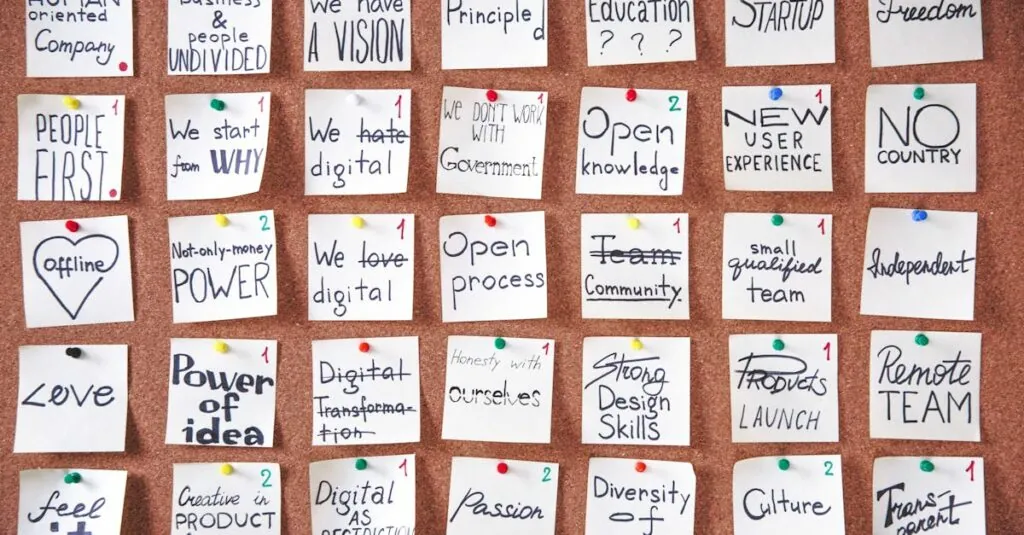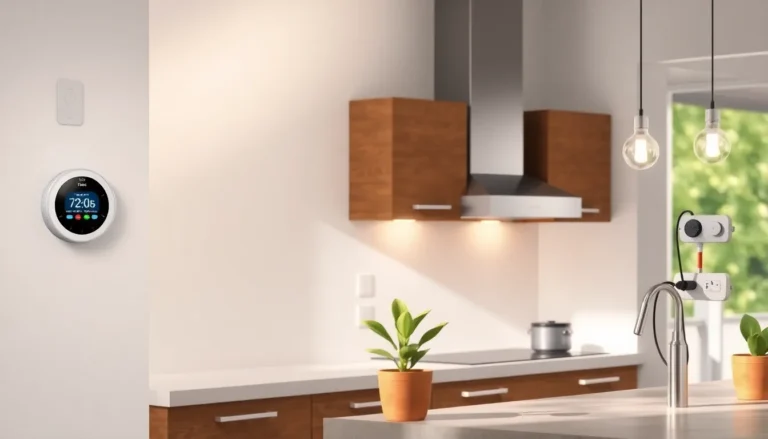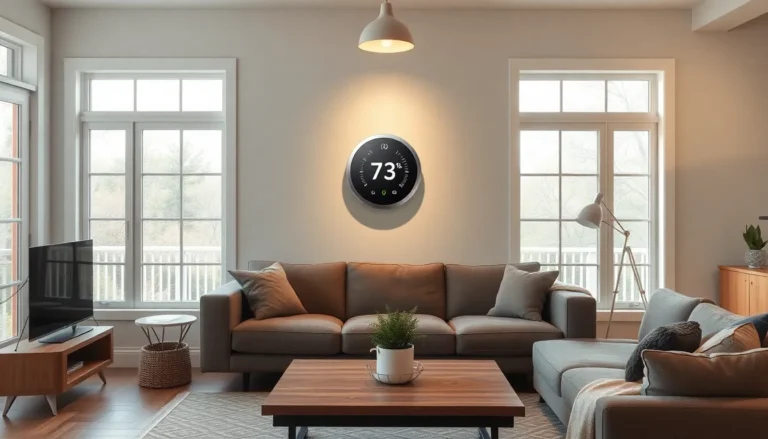Table of Contents
ToggleIn the world of design, concepts are the unsung heroes that transform ordinary ideas into extraordinary creations. Whether it’s a sleek website or a cozy coffee shop, the right design concept can make all the difference. Think of it as the secret sauce that turns plain spaghetti into a gourmet dish—without it, everything feels a bit bland.
From minimalist marvels to vibrant patterns that make your eyes dance, design concepts can inspire and innovate. They’re not just pretty pictures; they’re the backbone of effective communication and user experience. So buckle up and get ready to explore some fantastic examples that’ll not only spark creativity but might just make you chuckle along the way. After all, who said design couldn’t be fun?
Overview of Design Concepts
Design concepts serve as foundational elements that guide creators in developing projects. These concepts integrate functionality and aesthetics, ensuring both practical use and visual appeal. In digital design, principles like balance, contrast, and alignment play crucial roles. Each principle contributes uniquely to the overall effectiveness of a project, enhancing user experience.
Examples of design concepts include minimalism, which emphasizes simplicity and clarity. This approach helps to eliminate unnecessary elements, allowing key features to shine. Vibrant color schemes in branding attract attention and convey emotions. They influence perceptions and establish brand identity.
Another notable concept is user-centered design. This approach prioritizes the needs of users, fostering designs that enhance usability. By engaging with target audiences, designers create solutions tailored to specific requirements. Responsive design also exemplifies adaptability, ensuring seamless interactions across devices.
Typography significantly impacts design communication. Choice of fonts and text arrangements can dictate tone and readability. Exploring typographic hierarchy guides users through content, enhancing navigability.
Lastly, integrating sustainability into design concepts reflects a growing awareness of environmental impact. Eco-friendly materials and practices appeal to increasingly conscious consumers. Incorporating these elements fosters a responsible design approach.
Understanding these diverse design concepts empowers creators to elevate their work to new heights. Engaging with these principles inspires creativity and fosters innovation in design projects across various fields.
Types of Design Concepts
Understanding various design concepts enriches creativity and enhances project outcomes. Below are key categories that define effective design principles.
Visual Design Concepts
Visual design concepts focus on aesthetic elements that captivate users. Color theory plays a crucial role in evoking emotions and setting moods. Additionally, composition techniques such as the rule of thirds guide layout decisions. Balance between visual weight ensures harmony, making designs more appealing. Examples include using grids to create structured layouts, resulting in clarity. Incorporating imagery strategically helps to convey messages effectively.
User Experience Design Concepts
User experience design concepts center around the usability and accessibility of a product. Prioritizing users’ needs ensures designs are intuitive and engaging. Navigation design influences how easily users find information, with clear pathways enhancing satisfaction. Feedback mechanisms, like visual cues for interactions, improve overall user engagement. Testing designs through user research helps identify pain points, enabling adjustments that foster ease of use. Simplifying processes through streamlined interactions creates a more enjoyable experience for users.
Graphic Design Concepts
Graphic design concepts emphasize visual storytelling through imagery and text. Typography choices significantly affect readability and brand identity. Pairing fonts carefully enhances communication and creates aesthetic appeal. Furthermore, logo design encapsulates brand essence, demanding clarity and memorability. Integrating negative space can add depth and focus to a design. Visual hierarchy guides viewers’ attention through layout, ensuring key information stands out. Consistent branding across materials reinforces recognition and trust.
Real-World Design Concepts Examples
Design concepts shine in many real-world scenarios, illustrating their impact across various fields. Below are examples of design excellence in architecture, product development, and web design.
Architecture Design Examples
Architectural design concepts transform spaces into functional and aesthetic marvels. The Guggenheim Museum in Bilbao, Spain, showcases the concept of organic architecture with its flowing forms and integration with the landscape. Sustainable architecture finds expression in buildings like Bosco Verticale in Milan, featuring vertical forests that improve air quality. The Sydney Opera House exemplifies iconic forms, emphasizing visual impact and harmony with its surroundings. Each of these structures demonstrates the power of innovative design concepts in creating memorable spaces.
Product Design Examples
Product design concepts prioritize usability and aesthetics to enhance user experience. The iPhone revolutionized personal technology through its minimalist design and intuitive user interface, ensuring seamless interaction. Meanwhile, the Aeron chair exemplifies ergonomic design with its focus on comfort and support. Additionally, the Tesla Model S integrates sustainability with sleek lines and modern technology, appealing to eco-conscious consumers. Through these products, designers consistently show how appealing aesthetics combined with practicality can elevate user satisfaction.
Web Design Examples
Web design concepts play a critical role in shaping digital experiences. Websites like Airbnb utilize responsive design to ensure functionality across devices, enhancing user accessibility. The minimalist approach embraced by Google enhances usability, allowing users to find information quickly without distractions. Meanwhile, Dropbox employs a visual hierarchy that guides users effortlessly through its interface. Effective web design emphasizes clarity and engagement, demonstrating how thoughtful design concepts lead to enhanced interactions in the digital realm.
Importance of Design Concepts in Various Fields
Design concepts significantly shape outcomes across multiple disciplines. They serve as the backbone that blends aesthetics with functionality. In architecture, striking examples like the Guggenheim Museum illustrate how innovative design can enhance spaces. Unique structures create immersive environments that evoke emotional responses.
Product design benefits from well-thought-out concepts too. The iPhone’s minimalist interface exemplifies how design prioritizes user experience. When ergonomics matters, designs like the Aeron chair show that functionality combines with comfort.
Web design highlights the importance of responsive frameworks. Sites such as Airbnb and Google incorporate design principles that ensure seamless interactions. Effective web designs adapt seamlessly across devices, fostering user engagement and satisfaction.
Graphic design plays a crucial role in storytelling. Creative logo designs and thoughtful typography strengthen brand identity. Companies leverage visual hierarchy to convey messages clearly, capturing audience attention.
User experience design emphasizes usability and accessibility. Intuitive navigation contributes to overall satisfaction, making websites easier to use. Feedback mechanisms serve as valuable tools for refining designs based on user input.
Sustainability in design represents a growing trend. Eco-friendly practices reshape how products are developed and presented. Incorporating sustainable materials and methods promotes a positive impact on the environment.
Through diverse concepts, creators elevate their work in any field. Understanding the role of design principles inspires innovation. These foundational ideas drive the creative process, resulting in memorable and effective solutions.
Design concepts are vital in shaping not just aesthetics but also functionality and user experience. They provide a framework that guides creators in their journey from idea to execution. By understanding and applying principles like balance and contrast, designers can craft work that resonates with users on multiple levels.
The examples highlighted throughout the article demonstrate how innovative design can transform spaces and products into engaging experiences. As trends evolve, embracing sustainability and user-centered approaches will continue to drive creativity and innovation in the design landscape. Ultimately, these concepts empower creators to elevate their projects and leave a lasting impact.







